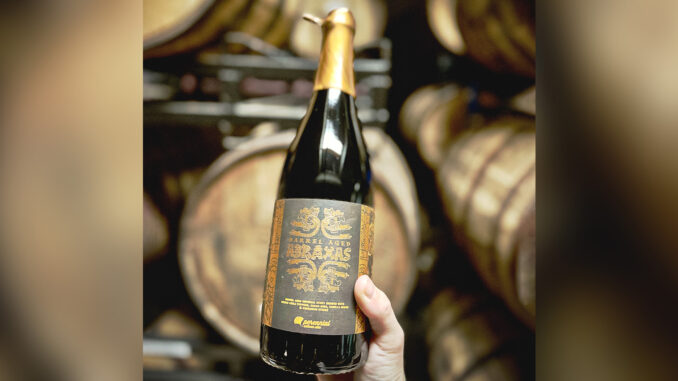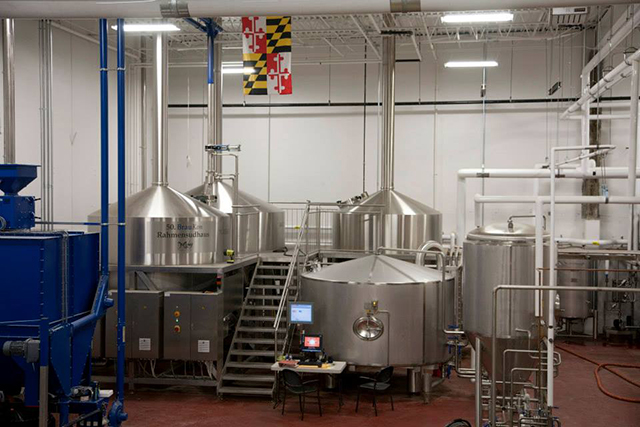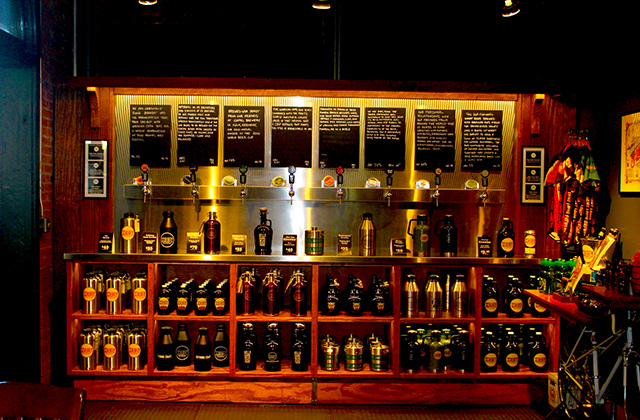
When Perennial Artisan Ales debuted Abraxas in 2012, the St. Louis brewery didn’t expect a single beer to change the trajectory of its brand. But that’s exactly what happened. Owner and brewer Phil Wymore shared with Brewer that unveiling the Stout at a beer and beverage pairing event that year stunned the team with its reception.
“People kept coming back and telling us it was the best beverage at the event,” he said. “From there, word-of-mouth spread quickly, as St. Louis had a very tightly connected craft beer fan community at the time.”
That grassroots enthusiasm became the foundation for Perennial’s reputation. Before national distribution was even possible, fans were already trading bottles across the country, effectively expanding the brewery’s reach for free. This success shows the power of organic buzz and peer-to-peer sharing in an era before social media algorithms dictated what drinkers discovered.
Recognizing the momentum, Perennial quickly shifted its business strategy.
“After recognizing the initial popularity of Abraxas, we immediately started brewing more of the base beer and putting it in whiskey barrels for long-term aging,” Wymore said. When the brewery released the barrel-aged version in 2013, it didn’t just attract new fans; it cemented Perennial’s position in a competitive niche at that time.
“We entered the beer into barrel-aged festivals and it started winning awards,” he said. “That helped amplify our reputation as a high-quality barrel-aged stout producer, and we quickly developed more brands and recipes around that category.”
Outside of St. Louis, Wymore feels that anyone who’s heard of Perennial thinks of them primarily as a stout producer, and they have leaned into that. Many breweries attempt to chase every trend, but Perennial instead doubled down on what it did best. That focus underscores a vital lesson: sustainable growth often comes from deepening identity, not broadening it.
Maintaining that identity, however, comes with new challenges.
“Scaling was pretty easy. Maintaining popularity is a challenge that all brewers face,” Wymore said. “Looking back, it feels like 2012–2020 was a golden age for craft beer growth and popularity. Now we have to work much harder to create buzz and excitement for our beer.” Rather than lamenting the shift, Perennial has used it as a creative catalyst.
“This issue has forced us to create a lot of fun variants of Abraxas, such as Barrel-Aged Vietnamese Abraxas, which has Saigon cinnamon and Vietnamese coffee,” he explained.
Now, navigating a maturing craft beer market, Wymore’s approach means turning demand fatigue into a reason to innovate. Perennial keeps Abraxas fresh through regular reinvention, including recipe variations and branding tweaks.
“We try to keep the look and feel fresh by creating new variants and making slight tweaks and color scheme changes with the labeling,” he said. “Unlike our other brands, Abraxas has many offshoots and variants.”
Marketing has also been key to maintaining engagement. Abraxas’s distinct branding — reinforced through annual merchandise — has turned it into more than a beer.
“It’s really cool to see people in St. Louis wearing Abraxas shirts,” Wymore said.
Merchandise as brand reinforcement may sound simple, but it transforms fans into ambassadors. It’s a low-cost marketing strategy that builds loyalty and visibility simultaneously.
The beer’s origin story also speaks to Perennial’s collaborative spirit and openness to its community.
“Abraxas came from an old blog post where we asked fans of the brewery to submit ideas for a beer they’d like to see Perennial brew,” Wymore recalls. “Someone selected ‘Mexican Chocolate Stout,’ and that was what appealed to us the most.”
Even the beer’s name emerged from an unexpected source: a vivid dream that echoed the art on Santana’s Abraxas album cover. That willingness to listen to fans and to take creative leaps reveals how consumer engagement can fuel your brewery’s brand identity from the start.
Abraxas’s popularity has definitely given Perennial the opportunity to make beers with many great breweries, Wymore said.
“In fact, we brewed a collaboration with Prairie Artisan Ales, which produces a popular Mexican Chocolate Stout called Bomb,” he said. “We merged the recipes to create Bombraxas.”
Strategic collaborations like that one not only strengthen brand reach but also build credibility within peer networks — a key advantage in a crowded market.
Even more than a decade after its debut, Abraxas remains a core pillar of Perennial’s business, accounting for roughly 9% of total production volume. Yet for Wymore, success isn’t measured solely by numbers.
“The presale for our four-packs — which include a bottle of Abraxas and three variants — gives us a good idea of demand beyond overall volume,” he said. A metric-based approach shows that any brewery can use preorders and presales as real-time feedback tools to gauge a brand’s health and plan production more efficiently.
Looking back, Wymore has no regrets.
“We feel beyond blessed to have created a beer that put us on the map and that continues to have demand year after year,” he said. “We’ve created hundreds of brands over the course of 14 years and realize that it’s nearly impossible to replicate that kind of success.”





Be the first to comment